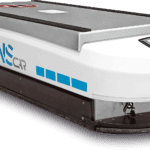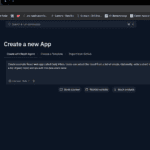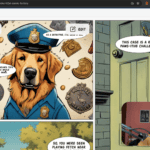ISO 20022 is becoming a crucial standard in the payments industry, facilitating better data exchange and improved transaction capabilities. This blog delves into the necessity of ISO 20022, its structure, and the implications for financial institutions and their customers.
Table of Contents
- Introduction to ISO 20022
- The Role of XML in ISO 20022
- Security Features of ISO 20022
- Challenges with Legacy Formats
- Benefits of Data Granularity in ISO 20022
- Interoperability in Financial Messaging
- Business Modeling for Payment Transactions
- The Logical Message Formation
- XML Syntax in ISO 20022
- Conclusion: The Future of ISO 20022
- FAQs on ISO 20022
Introduction to ISO 20022
ISO 20022 is an international standard for electronic data interchange between financial institutions. It provides a framework for the development of messages that allow for the exchange of information in a consistent and structured manner. The standard is designed to improve the efficiency of financial transactions by enabling rich data to accompany payment instructions, which ultimately enhances the visibility and traceability of payments.
This standard leverages extensible markup language (XML), which facilitates the encapsulation of complex financial data in a way that is both machine-readable and human-readable. By utilizing XML, ISO 20022 allows for greater flexibility and adaptability in message formats, catering to the diverse needs of financial institutions globally.

The Need for ISO 20022
The financial landscape is evolving rapidly, driven by technological advancements and increasing customer expectations. Traditional messaging standards like MT (Message Type) series have significant limitations, including rigid structures and truncated data fields that hinder the efficient processing of transactions. ISO 20022 addresses these challenges by providing a more flexible and comprehensive messaging framework.
One of the primary needs for ISO 20022 arises from the growing demand for enhanced data quality in payment processing. With businesses and consumers alike seeking more transparency and speed in transactions, the ability to include rich, structured data with each payment instruction becomes essential. ISO 20022 supports this need by allowing financial institutions to convey detailed information about transactions, which aids in compliance, reconciliation, and reporting.

Migration to ISO 20022: Is It Necessary?
The question of whether migration to ISO 20022 is necessary is complex and varies by institution. For many banks, particularly those operating in global markets, transitioning to this new standard is becoming increasingly critical. The benefits of enhanced data capabilities, improved operational efficiencies, and compliance with regulatory requirements provide a compelling case for migration.
However, smaller institutions or those with established legacy systems may find the migration process daunting due to costs, resource allocation, and operational disruptions. It is essential for these institutions to conduct a thorough cost-benefit analysis to determine if the transition to ISO 20022 aligns with their strategic objectives.

Structuring a Simple ISO 20022 Credit Transfer Message
Structuring an ISO 20022 credit transfer message involves several key components. At its core, the message comprises elements that define the transaction, including the debtor, creditor, and transaction details. Each of these elements is categorized into a hierarchical structure, allowing for clear relationships between different data points.
For instance, a credit transfer message might start with the identification of the debtor, followed by the creditor’s details, and conclude with transaction specifics such as the amount and currency. This structured approach not only enhances clarity but also ensures that all necessary information is captured in a consistent manner.
Understanding MT and MX Series Flow
The MT series, notably used in traditional payment systems, operates with a fixed-length format that limits the amount of data that can be transmitted. In contrast, the MX series, which is synonymous with ISO 20022, allows for a more dynamic and flexible approach to data transmission. This change facilitates a richer exchange of information, accommodating the complexities of modern financial transactions.
While both series serve similar purposes in facilitating payments, the key distinction lies in their data handling capabilities. The MX series can include multiple data elements in a single message, significantly improving the efficiency of processing and reducing the likelihood of errors.

Comparing MT and MX Series Structure
The structure of MT and MX messages highlights the advancements brought forth by ISO 20022. MT messages are characterized by their fixed-length fields, which can lead to data truncation and misinterpretation across different systems. This limitation poses challenges, particularly in cross-border transactions where multiple systems interact.
Conversely, the MX series employs a more logical structure that utilizes XML tags to define data elements. This tagging system allows for greater granularity and flexibility, enabling financial institutions to tailor messages to meet specific needs. As a result, institutions can ensure that critical information is not lost or misrepresented during transmission.
The Role of XML in ISO 20022
XML (Extensible Markup Language) serves as the backbone of ISO 20022, allowing for a standardized method of structuring financial messages. This flexibility enables institutions to create messages that are both human-readable and machine-readable, facilitating easier integration across systems.
By using XML, financial institutions can include complex data structures within their messages. Each element can contain multiple attributes, providing a rich context for each transaction. This capability is especially beneficial in environments where detailed information is crucial for compliance and reporting.
Advantages of XML in Financial Messaging
- Enhanced Clarity: XML’s hierarchical structure allows for clear relationships between data points, reducing the risk of misinterpretation.
- Flexibility: The extensibility of XML enables institutions to adapt their messaging formats to meet specific business needs.
- Interoperability: XML-based messages can be easily exchanged between different systems, facilitating smoother communication across borders.
Security Features of ISO 20022
Security is paramount in financial messaging, and ISO 20022 incorporates several features to protect sensitive data. The standard supports various encryption methods, ensuring that information remains secure during transmission.
Additionally, ISO 20022 allows for the implementation of digital signatures. This feature not only verifies the sender’s identity but also ensures that the message has not been altered during transit. Such measures enhance confidence in the integrity of financial transactions.
Key Security Mechanisms
- Data Encryption: Protects sensitive information from unauthorized access during transmission.
- Digital Signatures: Confirms the authenticity and integrity of messages, preventing tampering.
- Access Control: Ensures that only authorized users can access specific data, enhancing overall security.
Challenges with Legacy Formats
Legacy messaging formats, such as MT, present significant challenges in today’s fast-paced financial environment. These formats often lack the flexibility and data richness required for modern transactions, leading to inefficiencies and errors.
Moreover, the rigid structures of legacy formats can result in incomplete data transmission. This limitation complicates compliance with regulatory requirements and hampers the ability to provide customers with detailed transaction information.
Impact of Legacy Formats on Financial Institutions
- Increased Operational Costs: Maintaining and updating legacy systems can be expensive and time-consuming.
- Data Quality Issues: Limited data fields can lead to inaccuracies and incomplete records, affecting reporting and reconciliation.
- Compliance Risks: Inability to meet regulatory standards due to outdated messaging capabilities can expose institutions to fines and penalties.
Benefits of Data Granularity in ISO 20022
One of the standout features of ISO 20022 is its ability to provide data granularity. This means that financial institutions can include detailed information within their messages, enhancing transaction visibility and traceability.
Granular data allows for better compliance with regulations, as institutions can easily provide the required information during audits. Additionally, it facilitates improved customer service by enabling institutions to offer detailed insights into transaction statuses.
Key Advantages of Data Granularity
- Enhanced Compliance: Detailed transaction data supports easier adherence to regulatory requirements.
- Improved Customer Insights: Institutions can provide customers with comprehensive information about their transactions.
- Better Fraud Detection: Granular data helps in identifying suspicious patterns and behaviors, enhancing security.
Interoperability in Financial Messaging
Interoperability is a crucial aspect of modern financial messaging, and ISO 20022 is designed to bridge gaps between different formats and systems. By standardizing message structures, ISO 20022 facilitates seamless communication across various platforms.
This interoperability not only enhances efficiency but also reduces the risk of errors during data transmission. Institutions can easily exchange information with partners, clients, and regulatory bodies, streamlining their operations.

Importance of Interoperability
- Streamlined Operations: Enhanced communication between systems reduces processing times and improves efficiency.
- Reduced Errors: Standardized messages minimize the chances of misinterpretation or data loss during transmission.
- Global Reach: Institutions can engage with international partners more effectively, broadening their market reach.
Business Modeling for Payment Transactions
Business modeling is essential for understanding the complexities of payment transactions within the ISO 20022 framework. By employing modeling techniques, financial institutions can identify the various actors involved in a transaction and the roles they play.
This modeling process allows institutions to visualize transaction flows, identify potential bottlenecks, and streamline their operations. It also aids in aligning business needs with technical requirements, ensuring that the ISO 20022 implementation is both effective and efficient.
Key Components of Business Modeling
- Actors: Identifying all parties involved in the transaction, such as banks, customers, and regulators.
- Use Cases: Defining the different transaction scenarios to understand how each actor interacts within the system.
- Process Flow: Mapping out the transaction steps to identify efficiencies and areas for improvement.
The Logical Message Formation
Logical message formation is a critical step in structuring an ISO 20022 message. This phase involves identifying the key components of the transaction and organizing them in a coherent manner. Each component, such as the debtor, creditor, and transaction details, must be clearly defined to ensure that all necessary information is included.
For instance, in a credit transfer transaction, we start with the transaction type, which is identified as a credit transfer. This is followed by essential elements like the settlement amount, settlement date, and details about the debtor and creditor. By structuring this information logically, we can create a clear representation of the transaction that is easy to understand and implement.

Components of Logical Message Formation
- Transaction Type: Defines the nature of the transaction, e.g., credit transfer.
- Settlement Amount: The total amount to be transferred.
- Settlement Date: The date when the transaction is to be executed.
- Debtor Details: Information about the party initiating the transaction, including identification and contact details.
- Creditor Details: Information about the recipient, similar to debtor details.
XML Syntax in ISO 20022
The XML syntax is the final stage in the formation of an ISO 20022 message. This coding language allows for the structured representation of complex data in a way that is both machine-readable and human-readable. Each element of the logical message is translated into XML tags, creating a hierarchical structure that reflects the relationships between the various components.
For example, the main parent tag might represent the credit transfer transaction, while child tags would encapsulate the settlement amount, currency, debtor, and creditor details. This modular approach allows for flexibility and adaptability, making it easier for financial institutions to modify messages as needed.

Structure of XML in ISO 20022
- Parent Tag: Represents the main transaction (e.g., ).
- Child Tags: Include elements such as , , , and .
- Hierarchical Relationships: Child tags can contain their own sub-tags, allowing for detailed structuring of information.

Conclusion: The Future of ISO 20022
ISO 20022 is poised to revolutionize financial messaging by providing a standardized, flexible, and rich data exchange framework. As financial institutions increasingly migrate to this format, they will benefit from improved operational efficiencies, enhanced compliance capabilities, and better customer experiences.
Looking ahead, the adoption of ISO 20022 will likely accelerate as regulatory bodies and organizations push for standardized communication in financial transactions. This shift will not only streamline operations but also foster innovation in payment solutions, ultimately benefiting consumers and businesses alike.

Key Takeaways
- ISO 20022 enhances data richness and flexibility in financial messaging.
- Logical message formation and XML syntax are essential for structuring messages.
- The future of financial transactions will rely heavily on standardized messaging formats like ISO 20022.

FAQs on ISO 20022
What is ISO 20022?
ISO 20022 is an international standard for electronic data interchange between financial institutions, designed to provide a framework for developing messages that facilitate rich data exchange.

Why is ISO 20022 important for financial institutions?
ISO 20022 is crucial for financial institutions as it enables better data quality, compliance with regulatory requirements, and improved operational efficiencies in transaction processing.

How does XML enhance ISO 20022 messaging?
XML allows for a structured, hierarchical representation of data, enabling complex financial information to be conveyed in a clear and flexible manner. This enhances interoperability and reduces the likelihood of errors during data transmission.
What challenges might institutions face when migrating to ISO 20022?
Challenges include the costs associated with transitioning from legacy systems, the need for staff training, and potential operational disruptions during the migration process.









